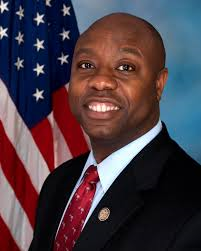 Wisconsin
Wisconsin
Public schools aren’t always required to serve all students and this fact served as an impetus for the creation of Wisconsin’s new special needs voucher program. The program, signed into law on Sunday, allows special needs students to enroll in private schools if they A) have been enrolled in a public school at least one year and B) if they were previously rejected by another school district for open enrollment.
The eligibility requirements are tight, but it stems from a lawsuit claiming districts are denying school transfers because the student has a special need. Ironically, this is a charge usually levied by school choice critics to attack charter and private school options.
The program begins during the 2016-17 school year and the scholarships will be worth about $12,000.
Grade: Satisfactory
Rep. Joel Briscoe, D-Salt Lake City

Students attending charter schools in Utah are counted differently than those attending district schools. In Utah, charter school student enrollment is counted once in October, while district school attendance is averaged throughout the year. This allegedly results in over-payments to charter schools of $6 million.
Joel Briscoe, a representative and teacher union employee from Davis County, Utah, offers a somewhat tongue-in-cheek suggestion to fix the issue: “Get rid of charter schools.”
That is a tad unfair. According to the University of Arkansas, charter schools, on average, receive some $1,600 fewer per pupil than district schools. Instead of solving any perceived budget issues, getting rid of charters would not only upset a lot of parents, students and teachers at the charters, but it would require the state to come up with millions more to education those same students.
Grade: Needs Improvement
Sen. Tim Scott

Sen. Tim Scott of South Carolina gave a passionate speech for school choice while advocating the need for portability of Title I funds. The idea would allow $14 billion in Title I to follow students to their school of choice rather than function as block grants to school districts. Naturally, districts oppose the concept.
Sen. Scott started out his speech with a bang.
“As we debate this education bill we must ensure our focus in the right place. Education policy cannot be about protecting bureaucracy, it should not be about empowering Washington, and it cannot be about an endless, fruitless push for some one-size-fits-all type of system.”
Even though Scott’s proposal was defeated, he made a strong case for an education system built around students rather than bureaucrats, so he comes out on top in the end. Read more of our coverage on Sen. Scott’s Title I amendment and speech here.


